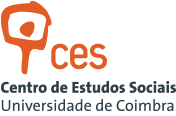Ciclo de Eventos
Projeto SANTA CRUZ | Reconstituição digital em 3D do Mosteiro de Santa Cruz de Coimbra em 1834
janeiro - abril 2022
Coimbra (Diversos locais)
A exposição Projetos para o Mosteiro, realizada em colaboração com a Câmara Municipal de Coimbra, representa o culminar do Projeto SANTACRUZ, projeto de investigação financiado pela FCT, sediado no Centro de Estudos Sociais e na Universidade de Coimbra.
O Projeto SANTACRUZ parte do estado de desagregação em que hoje se encontram as antigas dependências monásticas, resultado do longo processo de ocupação e desmantelamento ocorrido após a expropriação de 1834. Em 1876-79 demoliu-se o Claustro da Portaria para a construção da Câmara Municipal. Em 1888 abriu-se o antigo Claustro da Manga, deixando desamparada a magnífica fonte renascentista. A 3 de Janeiro de 1935, deu-se a icónica destruição da Torre dos Sinos.
O Projeto SANTACRUZ associa três vertentes fundamentais: o estudo histórico e documental, as novas tecnologias (por meio da elaboração de um modelo 3D de reconstituição do Mosteiro em 1834 e respetivas apps) e o projeto urbano e de arquitetura. A exposição Projetos para o Mosteiro, realizada no antigo refeitório monástico, centra-se nesta última dimensão e apresenta projetos de alunos finalistas do Departamento de Arquitetura da Universidade de Coimbra, coordenados por João Mendes Ribeiro, para a instalação de um núcleo museológico e interpretativo no Mosteiro de Santa Cruz e área envolvente. Opções comuns são a recriação contemporânea do claustro em redor da Fonte da Manga e de um elemento vertical, de referência urbana, no local da antiga Torre dos Sinos.
Desta forma, partindo do extraordinário legado simbólico, cultural e artístico do Mosteiro de Santa Cruz, e do conceito de “Paisagem Urbana Histórica”, recentemente definido pela UNESCO, propomos um novo projeto mobilizador para a Coimbra do Século XXI – a articular com a ocupação da margem do rio e com a cada vez mais necessária reabilitação dos antigos colégios da Rua da Sofia.
A exposição inclui também a apresentação da recriação da “Última Ceia” de Hodart, conjunto escultórico do Museu Nacional de Machado de Castro, projetada em VideoMapping 3D no seu local original. Um conjunto de QR Codes colocados em vários pontos das antigas dependências monásticas e das zonas envolventes permitem a visualização do mosteiro em 1834 através de tablets e smartphones de uso pessoal.


